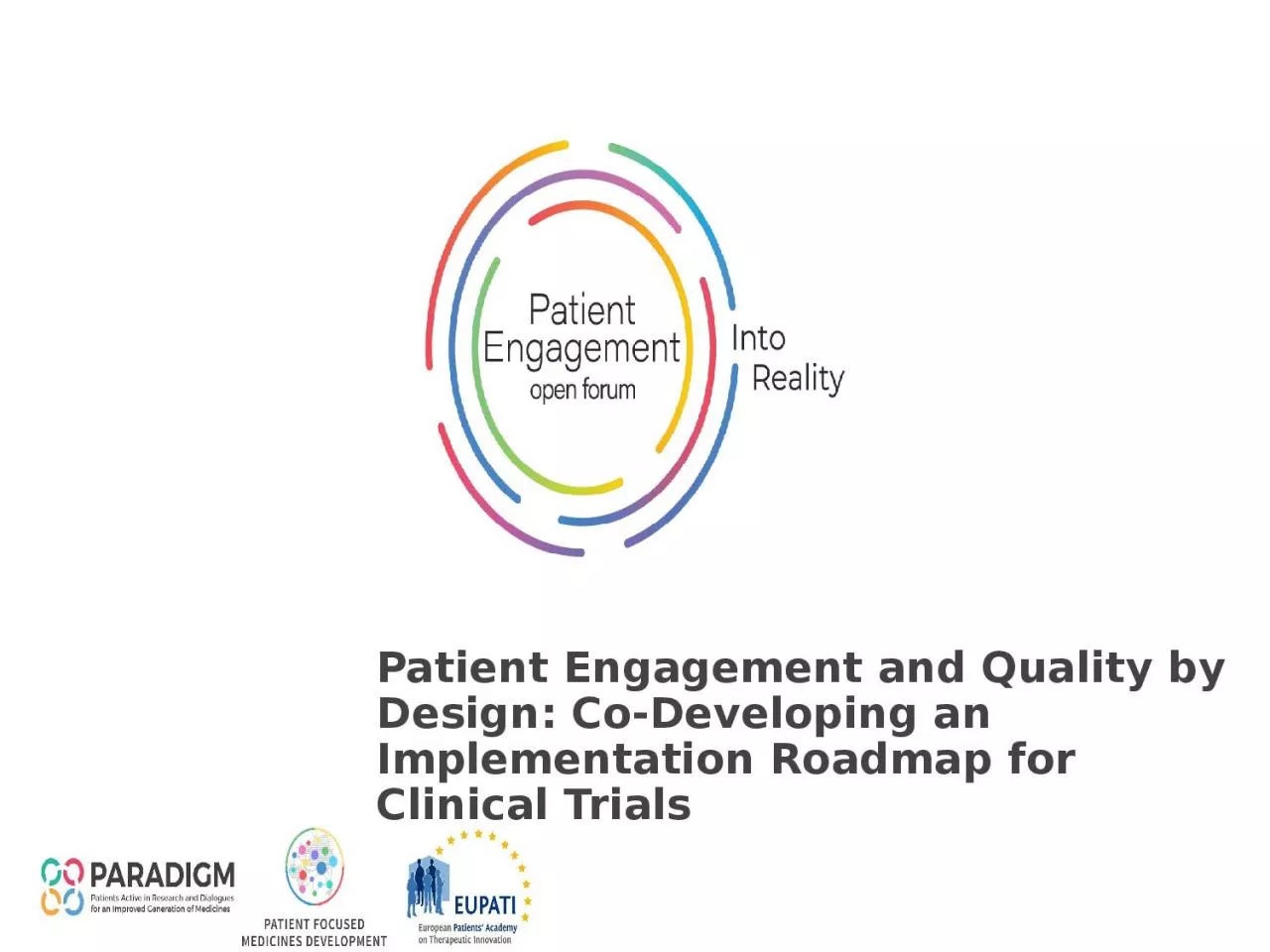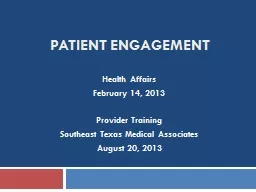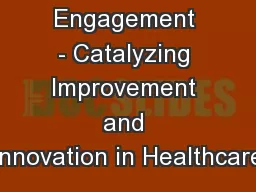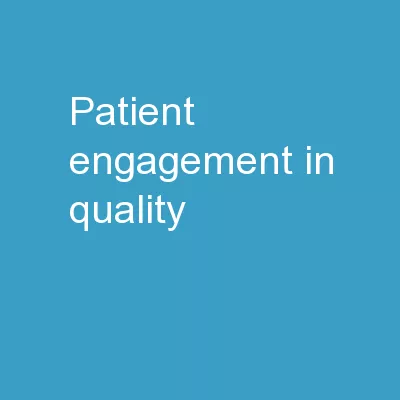PPT-Patient Engagement and Quality by Design: Co-Developing an Implementation Roadmap for
Author : heavin | Published Date : 2024-01-13
What is the Patient Engagement Open Forum A series of virtual events in 2020 where we will work together in a multistakeholder context to turn patient engagement
Presentation Embed Code
Download Presentation
Download Presentation The PPT/PDF document "Patient Engagement and Quality by Design..." is the property of its rightful owner. Permission is granted to download and print the materials on this website for personal, non-commercial use only, and to display it on your personal computer provided you do not modify the materials and that you retain all copyright notices contained in the materials. By downloading content from our website, you accept the terms of this agreement.
Patient Engagement and Quality by Design: Co-Developing an Implementation Roadmap for: Transcript
Download Rules Of Document
"Patient Engagement and Quality by Design: Co-Developing an Implementation Roadmap for"The content belongs to its owner. You may download and print it for personal use, without modification, and keep all copyright notices. By downloading, you agree to these terms.
Related Documents














